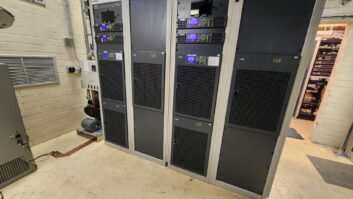
THOUSAND OAKS, Calif. — KCLU(AM/FM) is a community service of California Lutheran University, delivering comprehensive local news and National Public Radio programming to listeners in Ventura, Santa Barbara and San Luis Obispo counties in California via five transmitter sites.
Our flagship station, serving Ventura County, is KCLU(FM), Thousand Oaks. Southern Santa Barbara County is served by KCLU(AM) and its companion FM translator.
KCLU extended its coverage into northern Santa Barbara County and San Luis Obispo in 2013 through the acquisition of KCLM(FM), Santa Maria, Calif. Having long used T1 services to transport audio to our Santa Barbara transmitter sites, we were looking to avoid the recurring costs of expensive point-to-point circuits. Upon evaluating options on the market, we set our sights on the Intraplex IP Link codec from GatesAir.
CHANGES
Adopting the IP Link for KCLM helped us to prepare for an unexpected change in our transport architecture. Around the time we received our codecs for KCLM, our telephone service provider informed us that our 45-mile T1 contract into Santa Barbara would not be renewed. We decided to invest in additional codecs to replace those T1 circuits, laying the foundation for a reliable, bidirectional IP transport architecture to all of our remote transmitter locations.
From our studios in Thousand Oaks, we use an IP Link 100 to feed KCLM and an IP Link 200 to feed KCLU(AM) and its translator. Since the codecs are bidirectional, we use the return channels for off-air confidence monitoring.
Transporting IP audio across the open Internet has its own set of challenges. Couple that along with limited bandwidth at a remote transmitter site and you have a perfect candidate for QoS issues. However, with IP Link, GatesAir has delivered on the same promise of its legacy Intraplex STL systems: rock-solid reliability.
Much of this reliability comes from IP Link’s optional stream splicing feature. Though we use two different ISPs that will hopefully not drop the same packet, the IP Link has a collection of tools, such as time diversity, packet interleaving and forward error correction, to allow the user to optimize the streams for best overall performance. On the rare occasion when both ISPs lose the same uncorrectable packet, listeners rarely notice because of IP Link’s error concealment techniques.
The IP Link keeps track of every packet received, lost, early, late and corrected with full reporting and numerical statistics available from its Web-based GUI. We are also evaluating Intraplex LiveLook, a new software program that presents this and other network quality information in a graphical format.
One of my early concerns of placing a critical appliance like this on the open Internet was the threat of it being hacked. Thus far, the IP Link has proven to be very resilient to DoS and hack attacks with settings available to make itself invisible to unauthorized users or bots.
The quality of the audio has been exceptional. Despite limited bandwidth to our transmitter sites, the 192 kbps AAC-LC algorithm we chose consistently delivers crisp, clean audio that is the hallmark of NPR member stations.
The biggest benefit to our operation may be the overall long-term cost savings. We have cut our distribution costs by more than half by eliminating point-to-point T1s, paying only for local ISP loops. The ROI translated to an 18-month payback looking at the hardware and networking costs.
The IP Link has delivered the freedom of reliable, network-based audio transport without the high monthly costs associated with traditional transport solutions.
For information, contact GatesAir in Ohio at (513) 459-3400 or visit www.gatesair.com.











